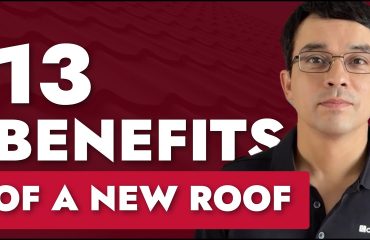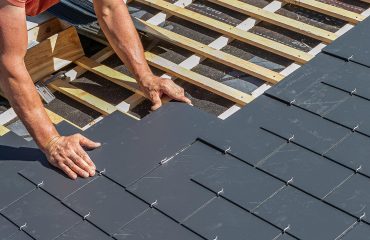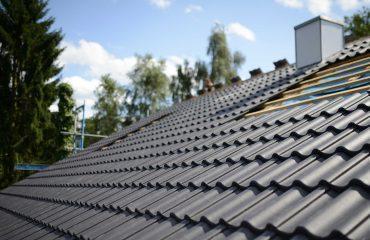Installing new shingles over your existing roof may seem like a quick fix that saves money and time. In reality, while a roof overlay might cut costs upfront, it can also hide underlying issues that compromise your home’s structure—and your peace of mind.
At William Penn Roofing, we’ve helped thousands of homeowners repair and replace their roofs to ensure long-term protection. In this guide, we’ll walk you through the pros and cons of roof overlays, from installation speed to hidden damage risks, so that you can make the right choice for your home.
Need help deciding what’s best for your roof? Get a free estimate from our licensed roofing contractors. We’ll inspect your roof, check for damage, and recommend the most reliable, cost-effective solution for your home.
What is a Roof Overlay?
A roof overlay applies new shingles directly over your existing roof. Essentially, you now have two layers of roofing.
Anytime you’re applying shingles over an existing roof, you need a hard, nailable surface. Overlaying can be done on an asphalt roof, a cedar roof, or over another existing layer of shingles.
What Are the Benefits of Roofing Over Existing Shingles?
Cost Savings
A roof overlay is significantly cheaper than tearing off the existing roofing material.
Faster Installation
Overlaying is faster, as there’s no need for labor-intensive tear-off work.
Less Waste
Overlaying shingles discards less material, saving you money on dumpster fees while reducing environmental impact.
Minimal Disruption
If you have elaborate landscaping, a deck, or a pool near the house, not removing the existing roof can preserve your property and reduce foot traffic around your home’s perimeter.
What Are the Downsides of Roofing Over Existing Shingles?
Hidden Damage
Overlaying covers up your existing shingles, which could hide damage or mold. Without removing the old roof, you may be layering over issues that will worsen over time.
Added Weight
Two layers of shingles add considerable weight, which could stress your roof’s structure and reduce its lifespan due to increased heat retention.
Shorter Lifespan
An overlay may shorten the roof’s life expectancy, making it a temporary fix rather than a long-term solution.
Ventilation & Moisture Issues
A roof overlay can restrict proper attic ventilation, trapping heat and moisture beneath the shingles. This can lead to condensation, mold growth, and deterioration of your roof over time.
Potential Code & Warranty Limitations
Manufacturer or installer warranties may not apply or could be limited when an overlay is done. Also, be aware that most building codes don’t allow more than two layers of roofing. Always consult a licensed roofing contractor to confirm what’s allowed in your area.
When Is a Roof Overlay the Right Option?
A roof overlay might be a good choice if:
- You’re selling your home soon.
- You don’t have the budget for a full replacement.
- You’re planning a home addition and need a temporary solution.
- Your roof is in good condition with only minimal damage.
When Should You Avoid a Roof Overlay?
Avoid a roof overlay if:
- There’s visible damage or missing shingles.
- You notice mold, mildew, or water stains (sometimes called “cat’s eyes”) in the attic.
- Your roof has structural issues or rotted plywood.
- The roof has already had repairs or is at the end of its life.
How Does a Roof Overlay Compare to a Full Roof Replacement?
| Factor | Roof Overlay | Full Roof Replacement |
| Cost | Lower initial cost | Higher upfront investment |
| Lifespan | Shorter (typically less than 20 years) | Long-term (30-50+ years) |
| Risk | Higher risk if there’s granular loss, existing repairs, or features like dormers or walls | Lower risk with full system replacement |
| Impact on Property Value | Minimal impact | Increases property value |
| Future Costs | Can be more expensive to replace later due to added layers (higher labor and dumpster fees) | No added removal costs for future roofing |
A roof overlay is a short-term, lower-cost solution. A full roof replacement, on the other hand, is a long-term investment that can last 30 to 50 years.
While a replacement costs more, it comes with full manufacturer and installer warranties for lasting protection.
Overlays also carry a higher risk of failure if:
- There’s excessive granular loss on your roof.
- You’ve had repairs or have roof elements, such as dormers or walls.
A full roof replacement also boosts your property value, which can justify the higher initial investment. If you eventually need to replace an overlain roof, you’ll face higher labor and dumpster removal costs due to the added layers.
Is Your Roof in Need of an Upgrade? Get a Free Estimate Today
If you’re stuck between a roof overlay and a full shingle replacement for your home, William Penn Roofing is here to help. We’ll evaluate your roof’s condition, walk you through your options, and help you find the most effective solution for your home and budget.
Get your free quote today and invest in a roof you can trust.


